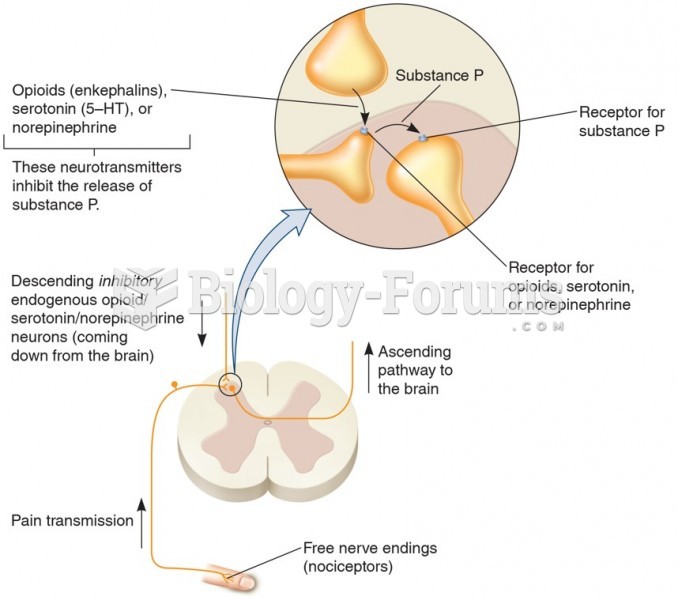This topic contains a solution. Click here to go to the answer
|
|
|
Did you know?
Historic treatments for rheumatoid arthritis have included gold salts, acupuncture, a diet consisting of apples or rhubarb, nutmeg, nettles, bee venom, bracelets made of copper, prayer, rest, tooth extractions, fasting, honey, vitamins, insulin, snow collected on Christmas, magnets, and electric convulsion therapy.
Did you know?
Thyroid conditions may make getting pregnant impossible.
Did you know?
Your heart beats over 36 million times a year.
Did you know?
On average, the stomach produces 2 L of hydrochloric acid per day.
Did you know?
Lower drug doses for elderly patients should be used first, with titrations of the dose as tolerated to prevent unwanted drug-related pharmacodynamic effects.







